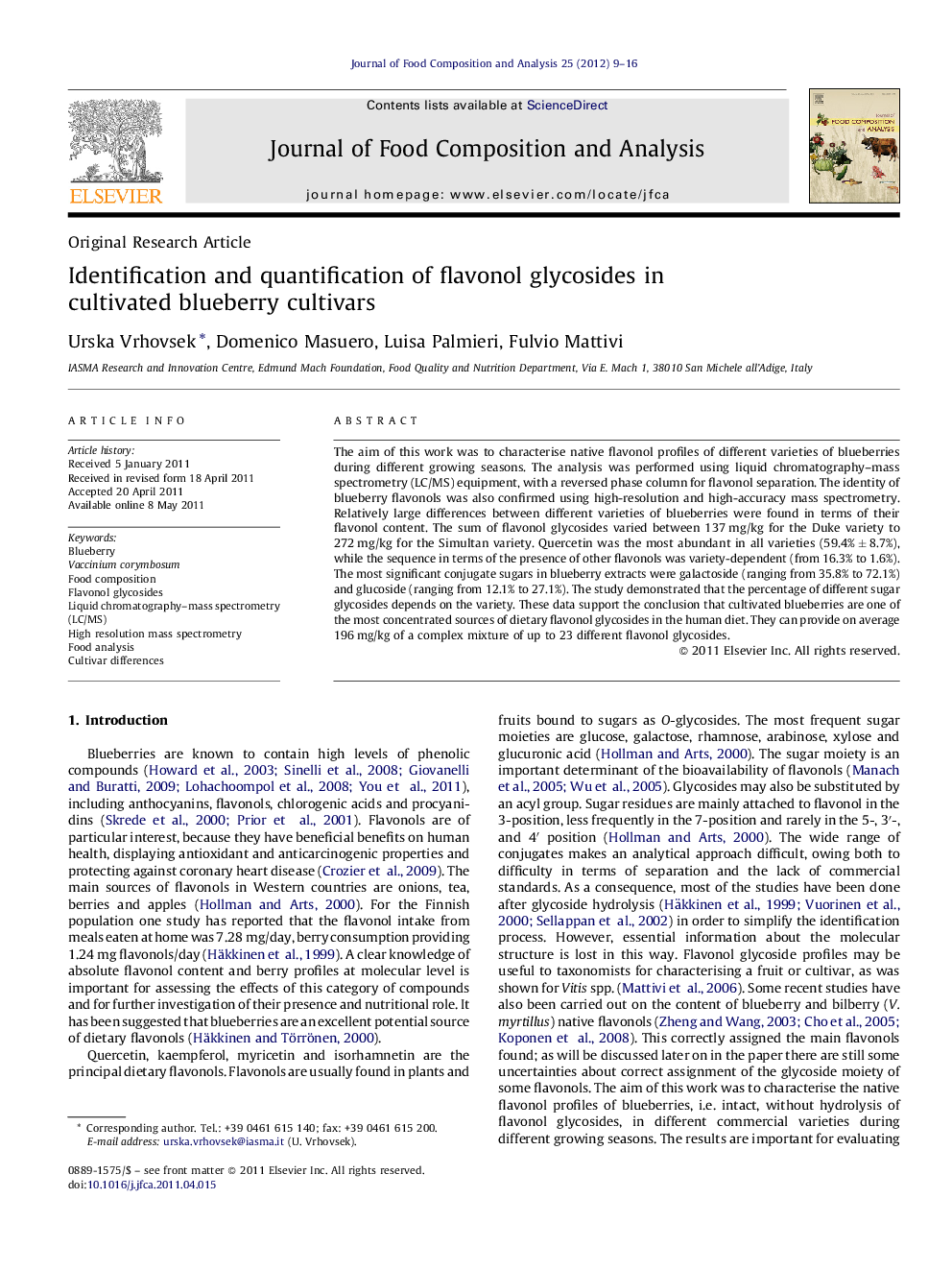| Article ID | Journal | Published Year | Pages | File Type |
|---|---|---|---|---|
| 10552869 | Journal of Food Composition and Analysis | 2012 | 8 Pages |
Abstract
The aim of this work was to characterise native flavonol profiles of different varieties of blueberries during different growing seasons. The analysis was performed using liquid chromatography-mass spectrometry (LC/MS) equipment, with a reversed phase column for flavonol separation. The identity of blueberry flavonols was also confirmed using high-resolution and high-accuracy mass spectrometry. Relatively large differences between different varieties of blueberries were found in terms of their flavonol content. The sum of flavonol glycosides varied between 137 mg/kg for the Duke variety to 272 mg/kg for the Simultan variety. Quercetin was the most abundant in all varieties (59.4% ± 8.7%), while the sequence in terms of the presence of other flavonols was variety-dependent (from 16.3% to 1.6%). The most significant conjugate sugars in blueberry extracts were galactoside (ranging from 35.8% to 72.1%) and glucoside (ranging from 12.1% to 27.1%). The study demonstrated that the percentage of different sugar glycosides depends on the variety. These data support the conclusion that cultivated blueberries are one of the most concentrated sources of dietary flavonol glycosides in the human diet. They can provide on average 196 mg/kg of a complex mixture of up to 23 different flavonol glycosides.
Keywords
Related Topics
Physical Sciences and Engineering
Chemistry
Analytical Chemistry
Authors
Urska Vrhovsek, Domenico Masuero, Luisa Palmieri, Fulvio Mattivi,
